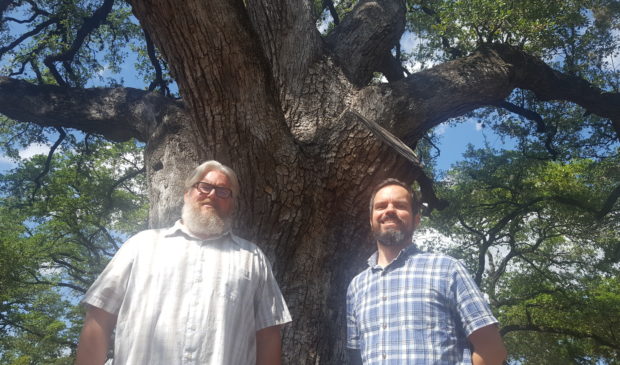Newsletter Signup
The Austin Monitor thanks its sponsors. Become one.
Most Popular Stories
- Parks Board recommends vendor for Zilker Café, while voicing concerns about lack of local presence
- City leaders evaluate surprising ideas for water conservation
- Audit: Economic official granted arts, music funding against city code
- Downtown Historic Resource Survey eyes seven new districts eligible for designation
- Austin is losing even more water to leaky city pipes than previously thought
-
Discover News By District
Popular Whispers
Sorry. No data so far.

Tree protection programs may not have the impact on property owners many believe
Wednesday, June 14, 2017 by Mose Buchele, KUT
When lawmakers meet in Austin later this summer for a special legislative session, Gov. Greg Abbott wants them to curb Texas towns’ ability to protect local trees.
He’s framed his directive as part of a larger effort to end “micro-managing” from liberal Texas cities like Austin, but lost in that rhetoric is the relative popularity of city tree ordinances in many different Texas communities, and the actual impacts the rules have in cities and towns that institute them.
In an interview with Dallas-Fort Worth’s WBAP Morning News last week, the governor gave some background on why he wants the rules repealed.
He said he once wanted to cut down a pecan tree in his yard in Austin. After initially telling him not to kill the tree, the city charged him a permitting fee, and asked him to replant trees to make up for the loss of the older tree.
“In Austin, Texas, Austin, Texas, owns your trees,” said Abbott. “It’s socialistic.”
The reality is there are about 60 Texas cities and towns that have tree protection ordinances, and many of those towns lean conservative.
“From Paris to Edinburg, I think Abilene is another one,” said Brendan Lavy, a Texas State University graduate student who has been studying the rules. “They proliferate throughout the state but mainly concentrate in faster-growing regions.”
According to a study Lavy wrote with Texas State Geography professor Ron Hagelman, tree preservation ordinances in Austin have had some surprising impacts.
In Austin, they say, about 7,700 permits were submitted to remove or otherwise harm protected trees between 2002 and 2011. Only around 5 percent of those were denied outright, though another 17 percent of permit applications were allowed to “close” without being resolved by the city.
When asked for numbers more recent than 2011, the city of Austin said even more tree removal permits had been granted in recent years. Only about 3 percent of denied requests came from residential applicants.
“So the idea that urban forestry regulations are in any kind of ubiquitous way causing people to not be allowed to cut trees down … none of the data bear this out at the moment,” said Hagelman.
One thing that surprised the researchers was where trees are removed with city approval.
Lavy and Hagelman said most tree removals during the period they studied took place in the urban core of Austin and on the outskirts. It’s the result, they speculate, of redevelopment and infill building near downtown, and new development on the periphery.
Hagelman said the rules serve more to manage and monitor the urban forest than to safeguard individual trees.
If the rules are thrown out, he suspects more trees will be chopped down, “but the bigger loss is the fact that if you take away the regulations, you take away the city architecture and the funding associated with maintaining the urban forest.”
He mentions funding because it’s federal government grants that pay for some of the very tree preservation programs the state may restrict.
Now, Texas Attorney General Ken Paxton might also weigh in. Yesterday, Central Texas State Sen. Donna Campbell asked for his opinion on whether local tree ordinances violate property rights guaranteed in the state constitution.
This story was produced as part of the Austin Monitor’s reporting partnership with KUT. Photo of Ron Hagelman (left) and Brendan Lavy by Mose Buchele.
The Austin Monitor’s work is made possible by donations from the community. Though our reporting covers donors from time to time, we are careful to keep business and editorial efforts separate while maintaining transparency. A complete list of donors is available here, and our code of ethics is explained here.
You're a community leader
And we’re honored you look to us for serious, in-depth news. You know a strong community needs local and dedicated watchdog reporting. We’re here for you and that won’t change. Now will you take the powerful next step and support our nonprofit news organization?
Related Stories
- This session saw legislative wins for child care providers and working parents
- Austin plans to move forward with abortion travel fund, officials say
- Records show first responders in Austin struggling to respond to Cruise’s self-driving cars
- Mobility Committee laments state law curtailing city’s power over driverless car companies


